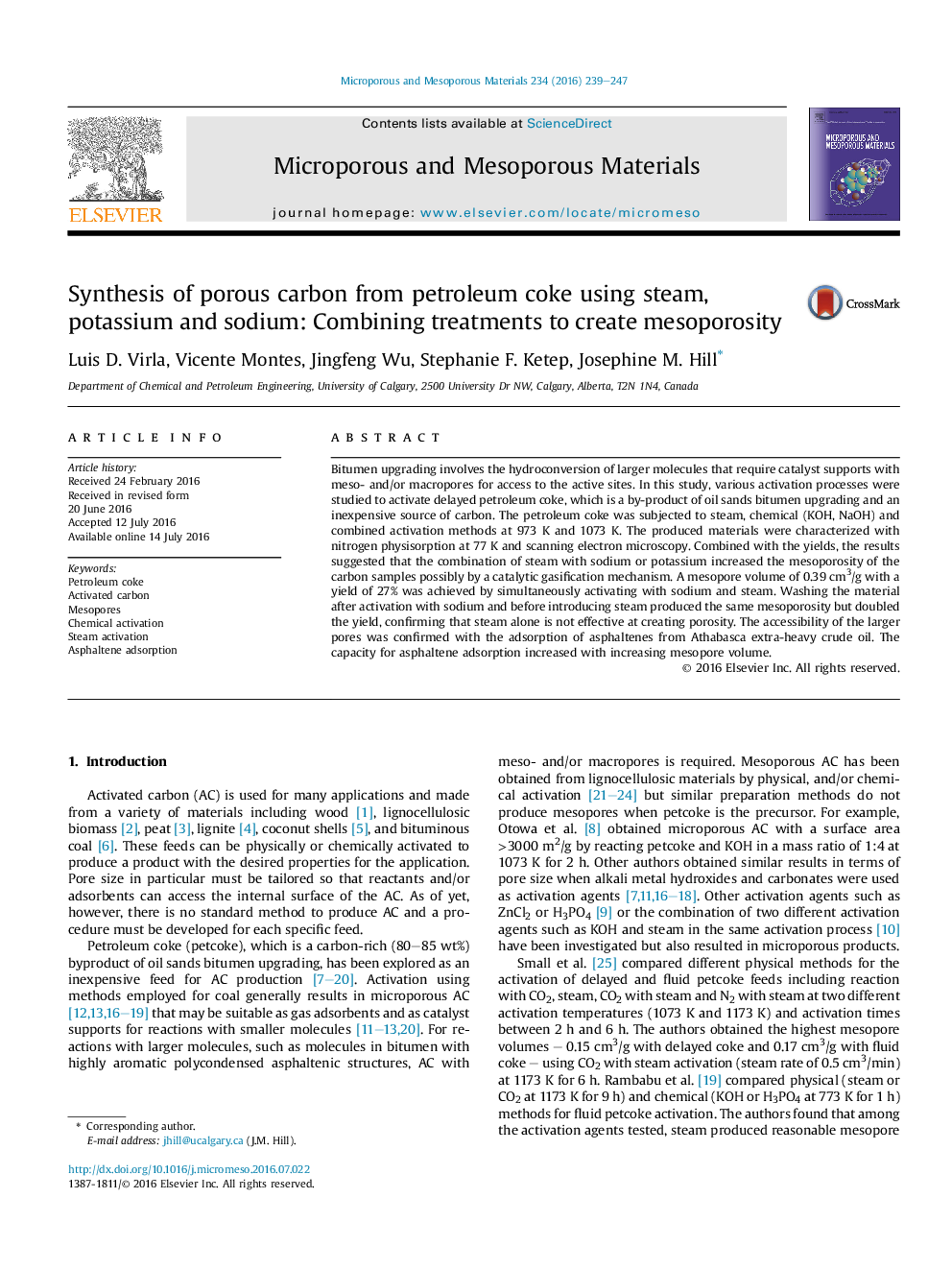| Article ID | Journal | Published Year | Pages | File Type |
|---|---|---|---|---|
| 71934 | Microporous and Mesoporous Materials | 2016 | 9 Pages |
•Porous carbon with mesopore volumes up to 0.39 cm3/g were produced.•Combining simultaneous chemical and steam activation increased mesoporosity.•Steam by itself at 1073 K was not effective at activating petcoke.•Asphaltene adsorption confirmed development of pores accessible to larger molecules.
Bitumen upgrading involves the hydroconversion of larger molecules that require catalyst supports with meso- and/or macropores for access to the active sites. In this study, various activation processes were studied to activate delayed petroleum coke, which is a by-product of oil sands bitumen upgrading and an inexpensive source of carbon. The petroleum coke was subjected to steam, chemical (KOH, NaOH) and combined activation methods at 973 K and 1073 K. The produced materials were characterized with nitrogen physisorption at 77 K and scanning electron microscopy. Combined with the yields, the results suggested that the combination of steam with sodium or potassium increased the mesoporosity of the carbon samples possibly by a catalytic gasification mechanism. A mesopore volume of 0.39 cm3/g with a yield of 27% was achieved by simultaneously activating with sodium and steam. Washing the material after activation with sodium and before introducing steam produced the same mesoporosity but doubled the yield, confirming that steam alone is not effective at creating porosity. The accessibility of the larger pores was confirmed with the adsorption of asphaltenes from Athabasca extra-heavy crude oil. The capacity for asphaltene adsorption increased with increasing mesopore volume.
Graphical abstractFigure optionsDownload full-size imageDownload as PowerPoint slide
